Mother’s Day: Being a Mom During a Pandemic
By Sherri Goodman
( Sherri joined Alabama Outdoors in January 2020. She is a communications and content strategist and a former journalist who wrote for the Birmingham News, Mobile Register, Albuquerque Journal, and Salt Lake Tribune. She and her husband have two wonderful teen daughters and love traveling, music festivals, and their pets.)
Being a mom has never been easy, but it’s been particularly challenging during the COVID-19 pandemic.
To be fair, parenting, in general, during a pandemic is really hard. All good parents worry about their children in difficult times. Will they stay healthy, do OK in school when they can’t go to school, remain hopeful when the rest of the world seems so discouraging … The list of concerns that could keep moms and dads up at night seems endless.
 With Mother’s Day approaching, however, it’s a good time to consider how moms are holding up in this crisis. I think of a mother’s job as being like the sweeper in curling. For those unfamiliar with the bizarre yet fascinating winter sport of curling, here’s a quick explanation: One player slides a granite stone on a sheet of ice toward a target area to score. Meanwhile, another player creates a “path” for the stone by methodically “sweeping” the ice in front of the stone to decrease friction.
With Mother’s Day approaching, however, it’s a good time to consider how moms are holding up in this crisis. I think of a mother’s job as being like the sweeper in curling. For those unfamiliar with the bizarre yet fascinating winter sport of curling, here’s a quick explanation: One player slides a granite stone on a sheet of ice toward a target area to score. Meanwhile, another player creates a “path” for the stone by methodically “sweeping” the ice in front of the stone to decrease friction.
Just like the sweeper, moms are out there every day determinedly trying to help clear the path for their families. In a normal world, that may mean basics like making lunches, helping out with schoolwork, checking to make sure the kids really did brush their teeth, taking them to the doctor, and shuttling them all over town. It would also include soothing them when they are sad, angry, hurt, or sick; encouraging them when they doubt themselves and correcting them when they get off track. And many moms are also balancing the demands of full-time jobs.
Now moms and dads are wiping down groceries, cooking and cleaning the kitchen constantly, dealing with justifiable meltdowns, seeking fun new distractions and joys, and trying to keep our kids from knowing that parents don’t really know what will happen next, either.
So, we try to make home life as full and fun as possible. But the loss is real, even for the luckiest ones. We can’t sweep away the missed proms, canceled graduations, and lost memories. I asked several moms to share their experiences during these extraordinary times. Here are their responses:
Tara, mom of two, kindergarten teacher
 “The words that come to mind are fear, worry, perseverance, and grace. My first thought was fear: what if I get sick, what if my husband and kids get sick? How will I handle it? What if I die or worse, they die? I worried about my elderly parents and still do. Dad goes out more than he should despite being told to stay home. Should they move in with us?
“The words that come to mind are fear, worry, perseverance, and grace. My first thought was fear: what if I get sick, what if my husband and kids get sick? How will I handle it? What if I die or worse, they die? I worried about my elderly parents and still do. Dad goes out more than he should despite being told to stay home. Should they move in with us?
I persevered as my job drastically changed. Teaching online school to kindergarten is a mix of hilarity and stress. Learning new technologies on the fly … well, let’s just say that I’m a better teacher in person than online. Again, fear comes back as I wonder what August will look like.
Grace — my favorite word of all — is something I have to remind me to give often to myself. Right now, good enough is really good. Grace has been given to me. I believe God has allowed us this time to just be.
We’ve had more laughter in our house. The kids, 15 & 12, are nice to each other. They also have become more helpful. We’ve snuggled and talked. We’ve baked, grilled and cooked. I’m not so tired that I can’t function. I don’t miss the rushing around, carpools, and heavy schedules. I like that we have slowed down — maybe that’s the message.”
Marilyn, mom of 2, SEO strategist
“My 4-year-old son asks me every night before bed and every morning he wakes up if tomorrow/today is a work day. And he’s crushed when five out of seven times, my answer is yes. I feel a lot of pressure to keep our kids’ minds and bodies busy, and that becomes more challenging and fatiguing each week.”
Blair, mom of three, graphic designer
“I would have never predicted being a mother living through a pandemic… and I certainly would have never dreamed that it would provide the amazing gift of time together that my family will never, ever be able to achieve again. For that, I am extremely thankful. To be honest, I’m scared for it to end. I fear I will wish I had made more of the time … and will long for it later when we’re back to our normal, crazy schedules. As a mom of three children who are 14, 11, and 8, this pandemic has provided me a glimpse of a simpler life. We’re seriously considering scaling back the kids’ activities for the future.”
Beth, mom of two, college professor
“Early in the quarantine, it was difficult. It felt like my workload had doubled, and online school hadn’t started yet for my teenagers. I felt like there wasn’t enough time with them, even though we were together all the time.
Now we’ve figured out a routine, more or less, and we’re seeing unexpected blessings in this. We’re able to linger around the dinner table and work on projects together. My daughter is learning to skateboard, and I’ve been hanging out with her while she practices. Having this kind of connection helps me a lot, and it also helps to exercise frequently and spend as much time outside as I can.”
Ann, mom of two, instructional technology sales
 “Because I normally travel during the week for my job, I may be one of the few moms who is happily soaking up every moment of my so-called sentence to work from home/quarantine. Call it making up for lost time.
“Because I normally travel during the week for my job, I may be one of the few moms who is happily soaking up every moment of my so-called sentence to work from home/quarantine. Call it making up for lost time.
Has it been more challenging? Yes, I’m just as busy, if not more so, with work, but now I’m also cooking more, cleaning more, and generally trying to make sure my daughters are staying on top of their assignments. Because we are all three so busy, I guess it keeps us from getting on each other’s nerves during the day, reserving the evenings for catching up and binge-watching the latest, streamed shows. I will say I have a new found love of gardening. It gives me an outlet for my worries and a chance to get outside.”
Being a mom is hard. Being a mom today is really hard. So, be sure to thank the mom in your life. And fellow moms, take care of yourself. Look out for other moms who may feel overwhelmed.
Remember who you are and what replenishes you. If it’s music, make time for it. If it’s yoga, create your own Zen. If it’s nature, find a way to get outside. And try to reflect on the best moments of each day, the small blessings that will get us through this time.
Find the perfect gift for your mom at Alabama Outdoors! We want everyone to enjoy the outdoors, and we work to build loyalty one connection at a time. Take advantage of our shipping, curbside pickup, or home delivery services or make an appointment for a virtual shopping trip today! #BeOutdoors
 Normally at this time of year, the weather warms up and our local walking trails get crowded. Most of the time it’s fine; a crowded trail really just means bikers get a little too close or you have to keep a closer eye on the kids. But, with social distancing requirements, many runners find themselves looking for off-the-beaten-path routes. Pavement pounders and casual runners alike know that a crowded run isn’t fun, so why not take this opportunity to try
Normally at this time of year, the weather warms up and our local walking trails get crowded. Most of the time it’s fine; a crowded trail really just means bikers get a little too close or you have to keep a closer eye on the kids. But, with social distancing requirements, many runners find themselves looking for off-the-beaten-path routes. Pavement pounders and casual runners alike know that a crowded run isn’t fun, so why not take this opportunity to try  If your mom likes
If your mom likes  Buying a bouquet of tulips or roses on Mother’s Day is a time-honored tradition. But what about giving her flowers to
Buying a bouquet of tulips or roses on Mother’s Day is a time-honored tradition. But what about giving her flowers to  Try outdoor yoga
Try outdoor yoga Choose a focus for your walks so you can study one aspect of nature more thoroughly. For instance, one day you could focus on trees. Take photos of different trees you see on your walk, let your child bring a
Choose a focus for your walks so you can study one aspect of nature more thoroughly. For instance, one day you could focus on trees. Take photos of different trees you see on your walk, let your child bring a  Chances are you have much of what you need already, but your tiny explorers will take their mission more seriously if they have the right tools.
Chances are you have much of what you need already, but your tiny explorers will take their mission more seriously if they have the right tools. 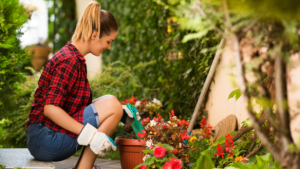 Does the mom in your life prefer pitching a tent under the stars or camping out in front of the TV? Would she rather hang out in the backyard, fuss over the flowers or lounge on the couch, and scroll through social media? If your mom can’t get enough of the outdoors, whether she is
Does the mom in your life prefer pitching a tent under the stars or camping out in front of the TV? Would she rather hang out in the backyard, fuss over the flowers or lounge on the couch, and scroll through social media? If your mom can’t get enough of the outdoors, whether she is  What could be a better way to spend Mother’s Day than lounging in
What could be a better way to spend Mother’s Day than lounging in 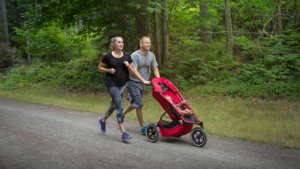 Give her a gift that will inspire her to take some time for herself and enjoy a Sunday run. Every serious runner knows it’s important to have the right kind of gear for the run.
Give her a gift that will inspire her to take some time for herself and enjoy a Sunday run. Every serious runner knows it’s important to have the right kind of gear for the run. 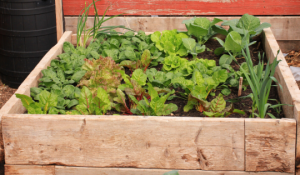 Spring has sprung in the South, as we are all staying at home, backyard gardening is just the hobby to pick up if you have not already! Growing a garden is rewarding in a variety of ways. Not only are they beautiful, but they also can help cut down on grocery bills, and can be a fun, satisfying outdoor activity for the whole family!
Spring has sprung in the South, as we are all staying at home, backyard gardening is just the hobby to pick up if you have not already! Growing a garden is rewarding in a variety of ways. Not only are they beautiful, but they also can help cut down on grocery bills, and can be a fun, satisfying outdoor activity for the whole family!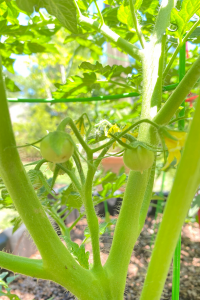 Grow what you want to eat! You will care more about the success of your garden if you are craving cucumbers and tomatoes this summer! You can buy plants that have already been started, called set plants or transplants; or, you can buy seeds to plant and grow on your own. While buying seeds is inexpensive, pay attention to the growing season of each plant as they do take time to mature and grow.
Grow what you want to eat! You will care more about the success of your garden if you are craving cucumbers and tomatoes this summer! You can buy plants that have already been started, called set plants or transplants; or, you can buy seeds to plant and grow on your own. While buying seeds is inexpensive, pay attention to the growing season of each plant as they do take time to mature and grow. 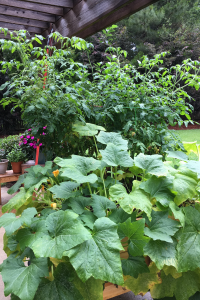 Also, give yourself a whole day to build your garden. This could be a great Mother’s Day activity, hint hint!
Also, give yourself a whole day to build your garden. This could be a great Mother’s Day activity, hint hint!  Our commitment has been to invest in and support local organizations doing good in the communities we all share. Here are some of the organizations that we have partnered with over the years that are working to preserve our beautiful, valued outdoors spaces. We encourage you to learn more about these groups and their missions.
Our commitment has been to invest in and support local organizations doing good in the communities we all share. Here are some of the organizations that we have partnered with over the years that are working to preserve our beautiful, valued outdoors spaces. We encourage you to learn more about these groups and their missions. Mobile Baykeeper
Mobile Baykeeper At
At  The North Face’s mission since 1966 has remained the same: provide the best gear for modern-day explorers and athletes, support the preservation of the outdoors and inspire a global movement of exploration.
The North Face’s mission since 1966 has remained the same: provide the best gear for modern-day explorers and athletes, support the preservation of the outdoors and inspire a global movement of exploration.  Whether going out for a week-long backpacking trip or just heading to a local trail for an afternoon
Whether going out for a week-long backpacking trip or just heading to a local trail for an afternoon This principle helps limit erosion that can severely damage ecosystems we love spending time in.
This principle helps limit erosion that can severely damage ecosystems we love spending time in. 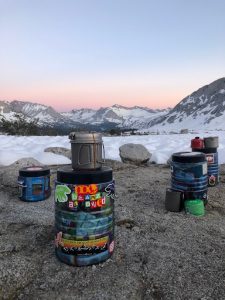 A common misconception is that it is okay to leave behind trash in a fire pit, but even that can disrupt the natural environment. It may attract animals and desensitize them to people, emboldening them to get dangerously close.
A common misconception is that it is okay to leave behind trash in a fire pit, but even that can disrupt the natural environment. It may attract animals and desensitize them to people, emboldening them to get dangerously close. 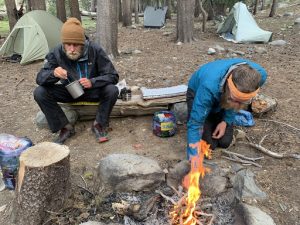 Poorly managed, they can also be one of the most destructive and hazardous activities we can do in the outdoors, so it is crucial we know what we’re doing if we’re going to make a fire at all. (Sometimes it’s best not to!)
Poorly managed, they can also be one of the most destructive and hazardous activities we can do in the outdoors, so it is crucial we know what we’re doing if we’re going to make a fire at all. (Sometimes it’s best not to!)  Animals should have a natural and healthy fear of humans to keep them from getting too curious and as a result too close to people. We should never pet or chase wildlife.
Animals should have a natural and healthy fear of humans to keep them from getting too curious and as a result too close to people. We should never pet or chase wildlife.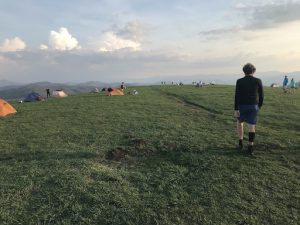 We can do this by wearing headphones instead of blasting music through a speaker, keeping pets on leashes, and keeping voices at an appropriate level. It is also important to know good hiker etiquette. Hikers are to yield to mountain bikers and horseback riders. Downhill hikers are to yield to uphill hikers so the hikers working the hardest (uphill) don’t lose their momentum.
We can do this by wearing headphones instead of blasting music through a speaker, keeping pets on leashes, and keeping voices at an appropriate level. It is also important to know good hiker etiquette. Hikers are to yield to mountain bikers and horseback riders. Downhill hikers are to yield to uphill hikers so the hikers working the hardest (uphill) don’t lose their momentum.